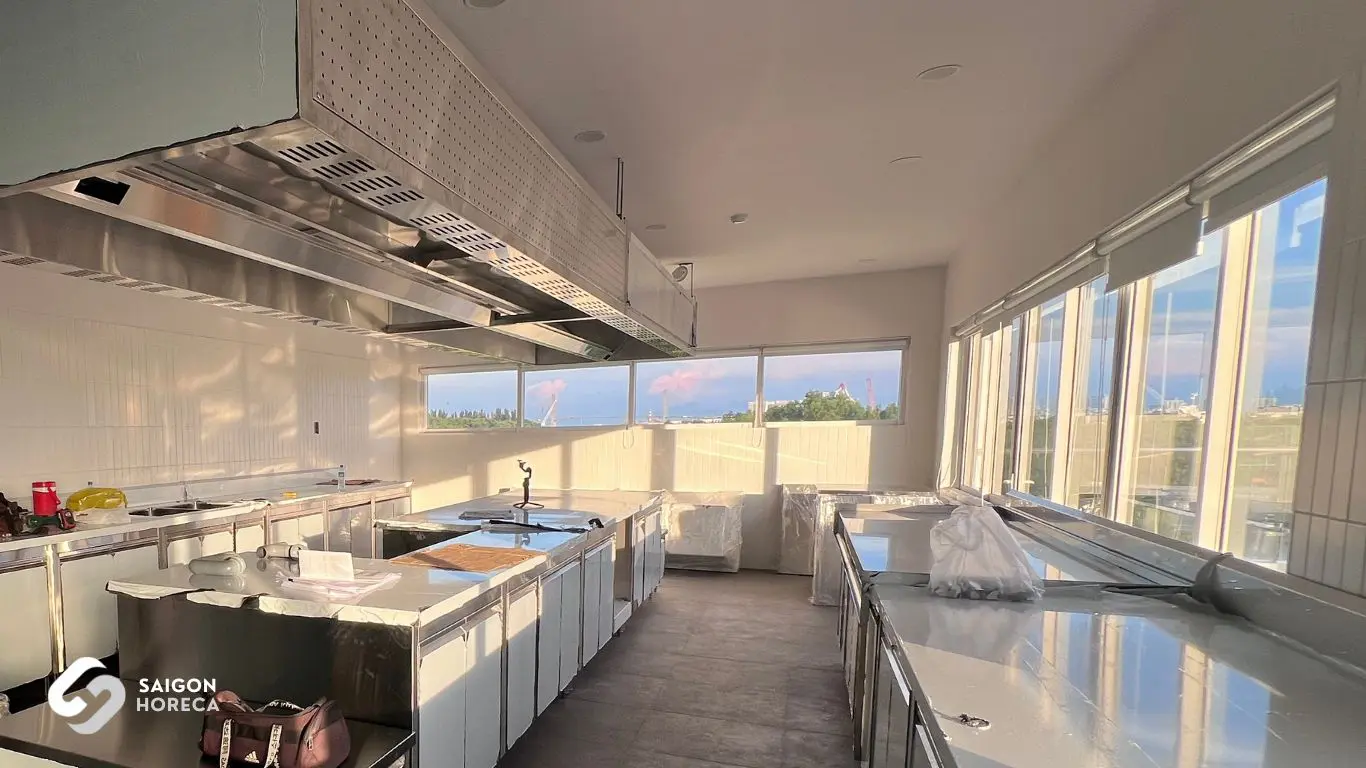Designing a restaurant kitchen is not simply a matter of placing stoves, sinks, or refrigerators into a given space. It […]
Read More
- News
Creating the Ideal Restaurant Menu: From Delicious Dishes to Pricing Strategy
- December 2, 2023
Welcome readers to today’s article, where we will explore an essential but often underrated aspect of the culinary industry – crafting the restaurant menu. Whether you are a culinary business owner or in the process of opening a restaurant, you have come to the right place!
In today’s highly competitive culinary landscape, a menu is more than just a list of dishes; it is a work of art, an opportunity to create a unique and captivating dining experience. This article aims to conquer those challenges, as Saigon Horeca provides you with crucial strategies for building an exceptional and enticing restaurant menu.
Let’s delve into the factors that determine menu success, from dish selection to pricing strategy, and together, we will discover the secrets to attracting and retaining customers. Join us in transforming your ideas into a distinctive and appealing menu, enhancing the culinary experience for your customers.
In this article
Explore Details About Restaurant Menus
What is a Restaurant Menu?
A restaurant menu is not just a simple list of dishes; it is an artistic creation that combines creativity and business efficiency. It is the true control panel of the restaurant, where the creativity and skill of the chef meet the desires and preferences of the diners.
Beyond being a source of information about dishes, a restaurant menu is a story that tells about the diversity and sophistication of cuisine. Each item on the menu is a journey from fresh ingredients, through the skilled hands of the chef, to the plate, and finally to the diner’s table.
Especially, the menu is not just a list of dishes but also a flavor map guiding diners through a culinary journey of the restaurant’s space. From the aroma of hot pot to the sweetness of a dessert, each dish on the menu is a unique and unforgettable experience. With each listed item, diners can find a culinary choice, an understanding of ingredients, the chef’s creativity, and the secret spices that make up the distinctive flavor of each dish.

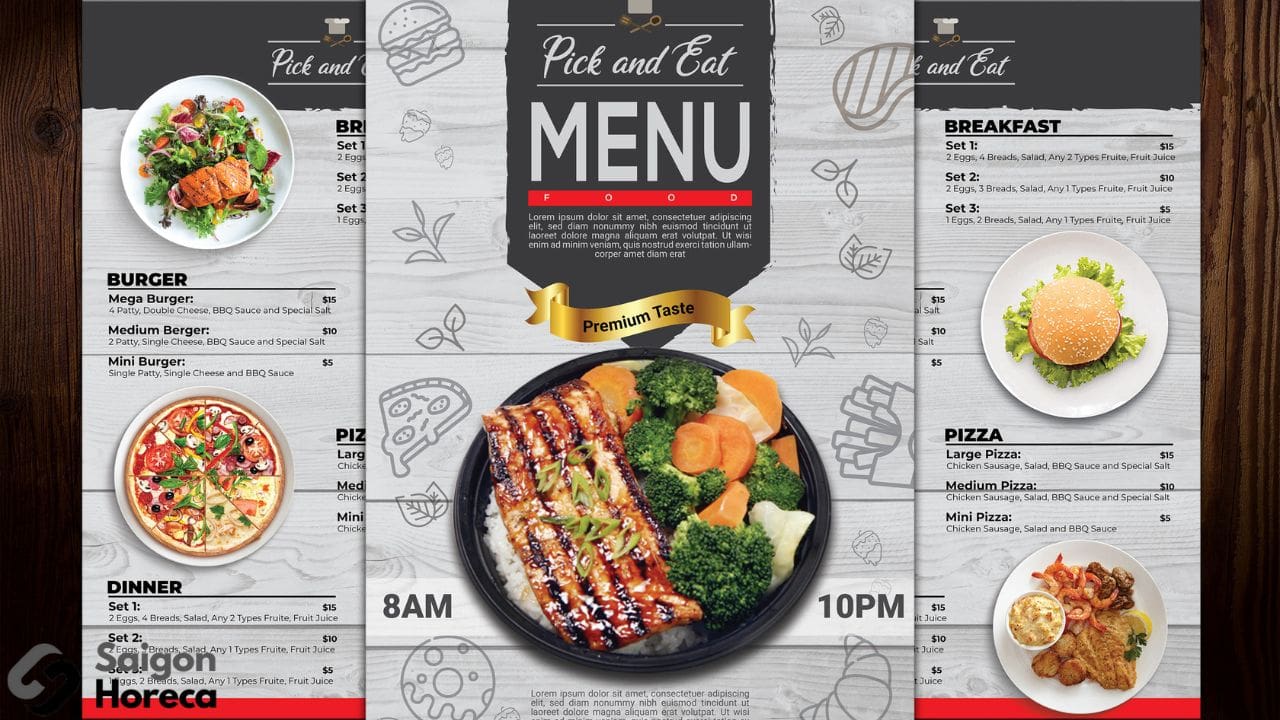
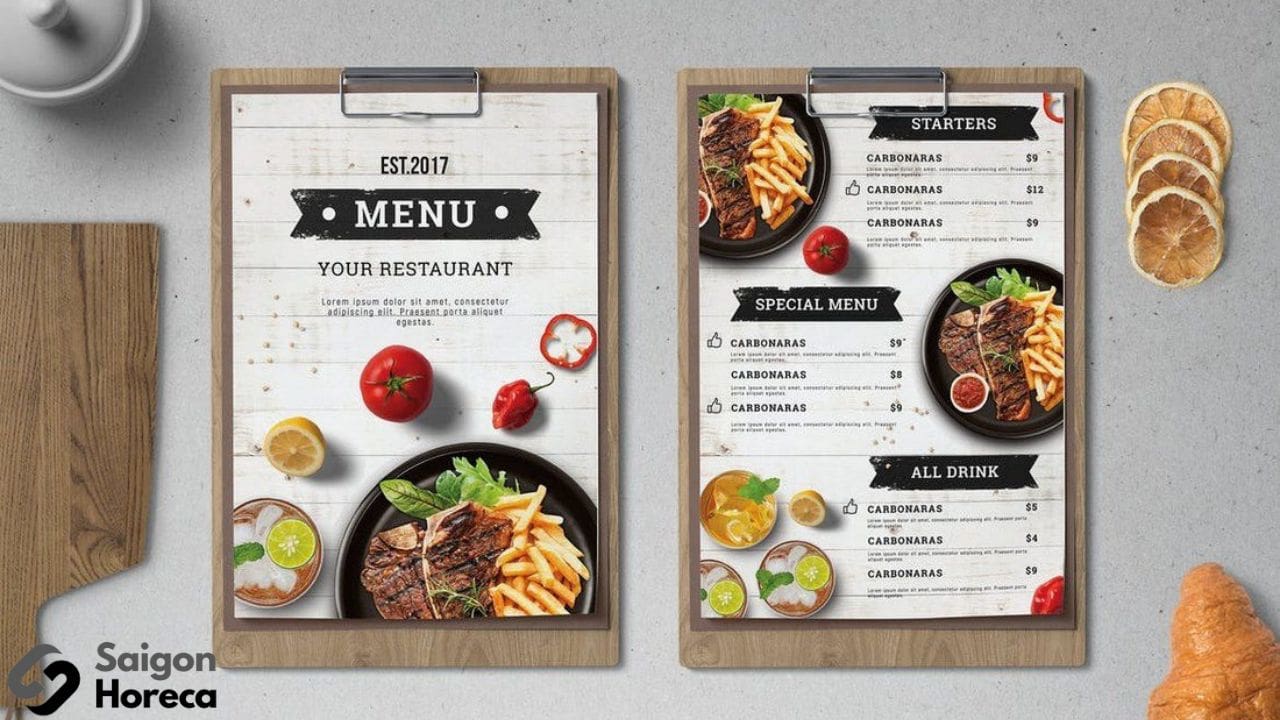
Types of Popular Restaurant Menus Today
Here is an overview of the types of popular restaurant menus today, each providing a unique culinary experience for customers:
- Buffet Restaurant Menu – A Diverse Culinary Journey:
Description: Buffet restaurants are places where diners have complete freedom to choose their dishes. With an unlimited menu, customers have the opportunity to enjoy a variety of flavors from around the world.
Advantages: Suitable for diverse taste groups, creating a relaxed and friendly atmosphere.
Note: Requires careful preparation to ensure food quality.
- À La Carte Restaurant Menu – Diverse Choices:
Advantages: Creates a sophisticated atmosphere, suitable for parties and important meetings.
Note: Requires diligence and high serving skills from the staff.
Description: The à la carte menu provides information about dishes and their corresponding prices. Customers can order dishes according to their preferences and enjoy professional service from the kitchen.
- Set Menu Restaurant – Convenient Lunch/Dinner:
Description: Set menu restaurants offer ready-made meal combos for lunch or dinner. Customers only need to choose a suitable combo, saving time and convenience.
Advantages: Suitable for company and family groups, optimizing time.
Note: Provide multiple price levels to meet diverse customer needs.
Each type of menu brings a unique perception and meets the specific needs of each customer group, from friends looking to explore diverse flavors to families seeking convenience and enjoyment for a relaxed lunch or dinner.
>>> Stay attuned to the sophistication and 5 crucial principles of the European restaurant menu right here:
Principles of Building a Restaurant Menu
Principle 1: Research and Establish Relationships with Ingredient Suppliers for the Restaurant Menu
Ingredients are not just the “origin” of each meal but the “soul” that creates the distinctive flavor world of a restaurant. In the process of building a menu, researching and establishing relationships with reliable ingredient suppliers are like discovering a culinary treasure trove full of secrets.
The chef is not only a cook but also an explorer continuously uncovering new ingredients—each peppercorn, each leaf of greens, and each wave of flavor. Therefore, careful selection of ingredient sources becomes a crucial key in building the quality foundation for the menu.
This ensures not only that each dish at the restaurant is crafted from fresh and safe ingredients but also opens the door to creativity. Every tender piece of meat, every fragrant coffee bean, and every drop of sweet honey tells a story of the ingredient supplier.
Thorough research on suppliers not only helps the restaurant maintain quality but is also an opportunity to bring new, unique flavors that customers have never experienced. Thus, each piece of meat, each chocolate sphere, and each ingredient on the plate becomes an intriguing story, creating a wonderful connection between the restaurant and the diners.
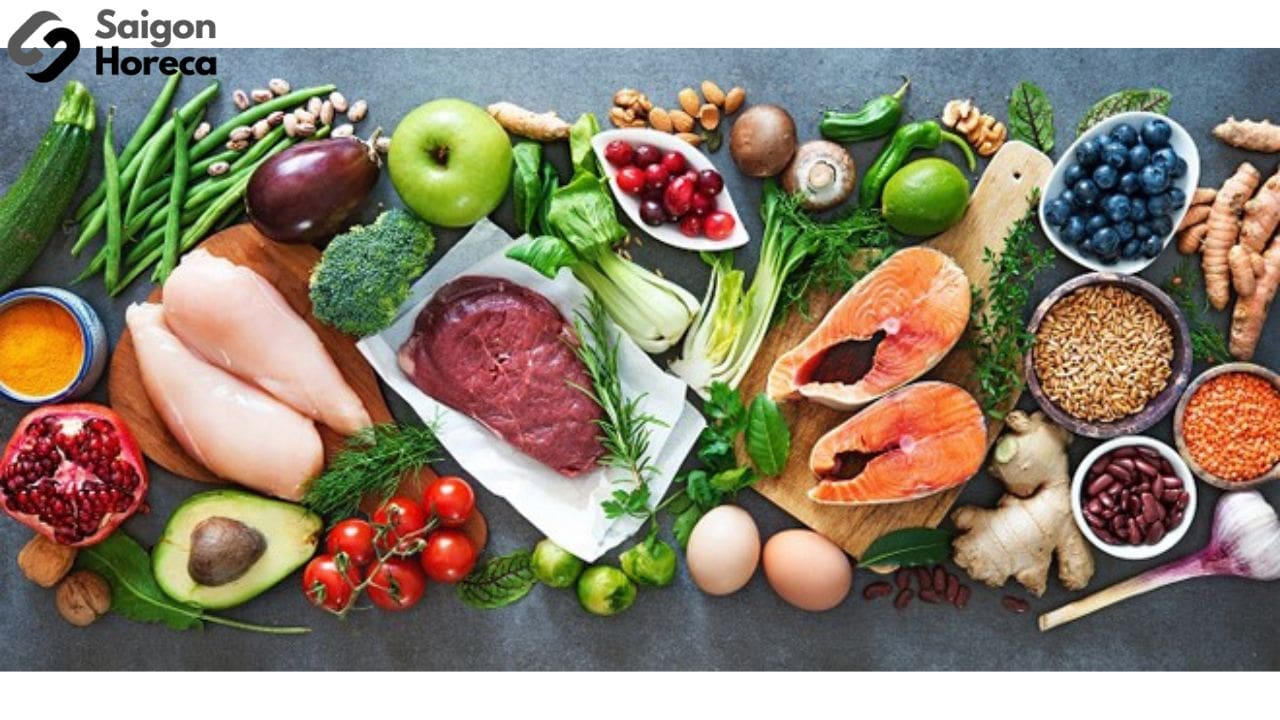
Principle 2: Mistakes to Avoid When Adding Dishes to Your Restaurant Menu
In the journey of developing a menu, avoiding pitfalls is like navigating a road full of challenges to reach the perfect destination. It’s not just about pricing; it also includes the quality of printing and the aesthetics of the menu—factors that determine success from the first glance.
Particularly, paying attention to the print quality ensures clear information and provides an opportunity to showcase the creativity and professionalism of the restaurant. From selecting the type of paper to arranging colors, every detail contributes to creating an engaging experience for customers. The harmonious blend of images and text, colors, and fonts not only highlights each dish but also forms an overall picture that is truly magnificent.
This not only helps prevent risks of unclear information but also enhances the restaurant’s brand value. A well-crafted, visually appealing menu not only attracts customers from the first step but also contributes to creating a high-class and memorable culinary experience.
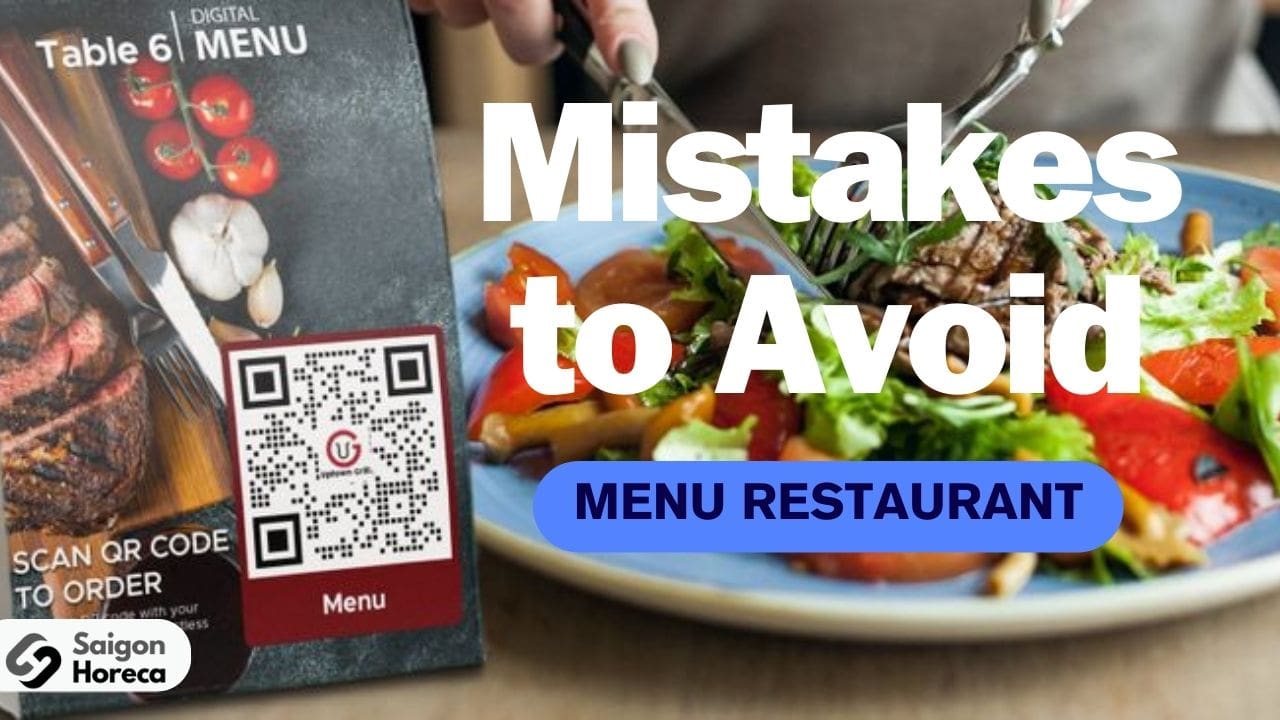
Principle 3: Uniqueness Through New Menus – Building Strategies for Special Occasions
Special occasions and events are not just times for restaurants to open their doors; they are opportunities to create a culinary feast that captivates every sense of the diner. The principle of innovating the menu on these occasions is not just about “cooking” but about “crafting an experience of space and enjoyment.”
Special occasions demand that restaurants embrace creativity and present unique dishes. Each festive season brings its own distinctive ingredients. Utilizing these seasonal, distinctive ingredients enriches the menu, making it more diverse and sophisticated. Elevate each dish with the freshness of vegetables, the aroma of spices, and the deliciousness of seasonal specialties. Naming dishes according to the theme of the event, and even decorating the restaurant space uniquely, all contribute to creating a special atmosphere and building unforgettable memories in the hearts of customers.
Principle 4: Cost Balancing of Dishes in the Restaurant Menu Effectively
In the initial stages, cost balancing is not just a strategy but also a refined art that helps the restaurant efficiently and sustainably utilize resources while ensuring each dish maintains quality and allure. Making the right decisions regarding ingredients is the most crucial choice. Striking a balance between quality and value creates a vibrant menu, diverse in flavors, and with pricing options suitable for a diverse customer base.
Cost balancing also involves smart task allocation within the kitchen team. Efficient collaboration between the head chef and staff is the key to delivering each delicious dish promptly and effectively.
Principle 5: Expand the Menu with a Variety of Key Ingredients
Diversity in the menu not only provides a wide range of choices for customers but also helps optimize ingredient usage. Applying the principle of diversifying dishes from key ingredients is the key to unlocking a creative world, not only saving costs but also creating a unique and sustainable culinary experience.
Creating Unique Characteristics for the Restaurant Menu
Building a restaurant menu is not just a technical process; it’s also a creative journey where every small detail contributes to creating an outstanding culinary experience.
Menu Item Selection and Sourcing Ingredients
The choice of dishes and beverages is a crucial step, where the primary source of inspiration is formed. It involves not only selecting dishes with diverse flavors but also finding high-quality and unique ingredients. Creativity starts here, combining refined ingredients to create new culinary experiences. Ensure a stable and high-quality supply of ingredients to maintain consistency in the menu.
Pricing Each Dish
Calculating costs and pricing each dish is essential to strike a balance between profitability and value for the customer. It’s not just about calculating the processing costs; it requires a deep understanding of the target customers and the market. The price must reflect quality but also be in line with the income level of the target customers. For each dish, consider the target customer and ensure the price reflects the value of the dish.

Arranging and Presenting Dishes
The menu is designed to stimulate curiosity and desire. Flavors, colors, and presentation all need to create an attractive picture. Arrange dishes logically or according to the restaurant’s characteristic culinary style. The goal is for customers to want to try more than one dish when they look at the menu.
Food Tasting
Food tasting is a crucial step to ensure that every detail works harmoniously. Here, the research team and chefs not only work as cooks but also embody the role of discerning customers. They evaluate every aspect, from appearance to taste, to ensure each dish meets the expectations and desires of the diners. Organize a tasting session with the evaluation team to gather multidirectional feedback and adjust dishes if needed.
Menu Design
Finally, designing the menu is an opportunity to create an attractive drawing and leave a lasting impression on customers. The design style should reflect the essence of the restaurant and create a strong impression. An eye-catching and professionally designed menu will make a positive impression on customers. Utilize graphic design elements, appealing images of dishes, and captivating descriptions to make the menu unique and interesting.
Monday - Friday
from 8h00 to 18h00
Số 40 Đường số 6, KDC Melosa Khang Điền, Phú Hữu, HCM.
Contact anytime
50 square meters – it may sound spacious for a living room, but turning it into the heart of a […]
Read More
